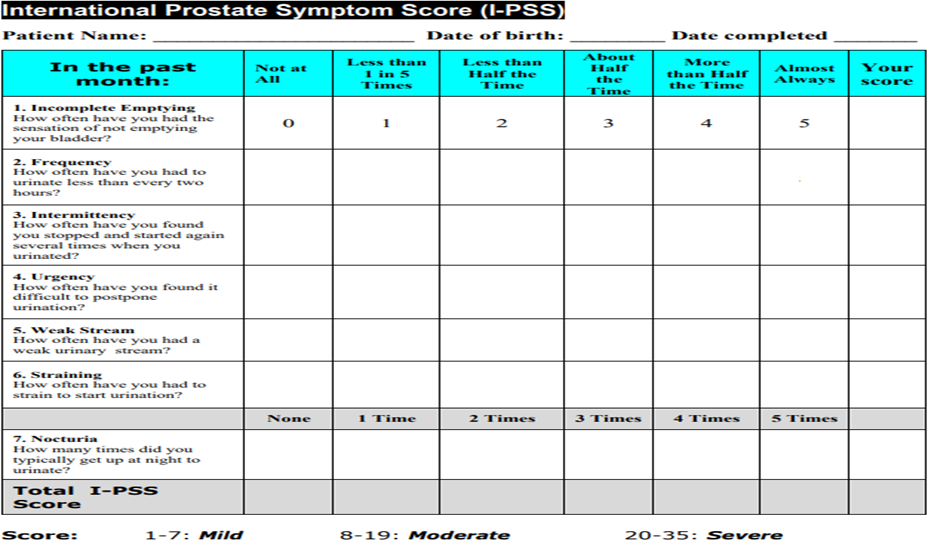Last week we talked about whether you have benign prostatic hyperplasia or not.
Let's look at the picture:

The prevalence of benign prostatic hyperplasia is high, so there is an international questionnaire to find out if you have benign prostatic hyperplasia or not.
If the answers don’t get a score of 0 then by default the score is 5. The maximum possible score is 35 points.
If the result is moderate or even worse, we suggest you see a doctor.
Generally, the doctor may arrange a physical inspection:
Urine routine examination (to exclude the possibility of infection)
Digital rectal exam (because the prostate is in front of the rectum, it can be touched when diagnosing.)
Ultrasound inspection (to observe hypertrophy of the prostate more clearly)
Urodynamic examination (to evaluate the condition of urination)
These examinations are not only to determine whether there is a problem with hypertrophy of the prostate but also to rule out other possible diseases by arranging other blood tests.
Benign Prostate Hypertrophy treatments include oral medication, extracorporeal shockwave therapy and surgery.
If the prostate gland is so big that it affects quality of life, it is necessary to treat it for BPH.
There are two types of commonly used drugs. The first is to inhibit male hormones which can reduce the size of the prostate gland but the side effect is that it may affect sexual function. The second is to inhibit alpha-adrenergic receptors which can improve symptoms but the side effect is hypotension. Which drug should be used depends on the physician’s evaluation and discussion with the patient. If you are really worried about the impact of sex, you should avoid the first drug. If you have high blood pressure, you can use the second drug to reduce blood pressure due to its side effects.

Please look forward to the next article.
We'll talk about surgery for BPH.
See you next time~
No comments:
Post a Comment